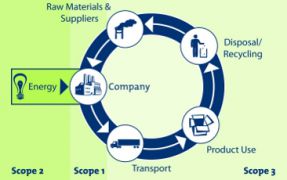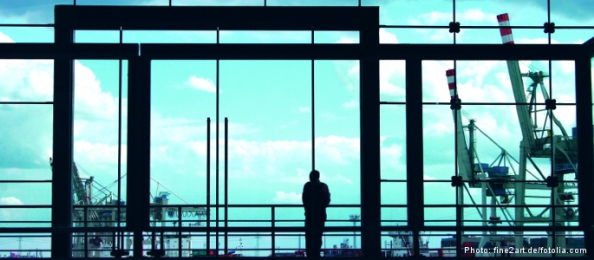Sustainability 2.0 – Looking Beyond the Factory Gates
Sustainability is a trendy word. It is readily and frequently on everyone’s lips. But there is much more to the term than just a trend. For companies, sustainable business already is the key to future competitiveness and long-term success – but it remains a major challenge. This is because corporate responsibility does not end at the factory gate.
Corporate social responsibility and sustainability are not short-lived trends. They will determine the future competitiveness of a company. Therefore, taking over social and ecological responsibility is a task that can no longer be managed in an additive process.
To tackle sustainability strategically
Instead of implementing end-of-pipe measures, companies have to tackle sustainability strategically and integrate it into their core operations. Products, processes, and corporate activities all have to be aligned with sustainability goals. In the end this requires not only a change in mentality, but also a change of entire business models. In short: Sustainability 2.0. This can be a major challenge for those companies wanting to ensure long-term success and a leading position in the market. At PE INTERNATIONAL, this task is called “business transformation” and PE has turned it into its business model. Today, PE INTERNATIONAL’s range of solutions for product and corporate sustainability makes it both a pioneer and a leader in the field. Furthermore, as a globally operating software and consulting company, PE also intends to help companies worldwide, through its products and services, to become sustainability leaders themselves.
The business model of PE INTERNATIONAL is “business transformation”
- Sustainable product design at PUMA
The example of PUMA: When the sports goods manufacturer was developing a new, innovative packaging for sports shoes, PE INTERNATIONAL identified the environmental impacts of the different packaging alternatives with the help of Life Cycle Assessments (LCAs). The badly performing options could be rejected immediately, and the best performing ones could be pursued. Thus, the environmental performance of the new packaging was optimized as early as in the development stage. The outcome was a 65 percent reduction in material use and a 66 percent (10,000 tons) reduction of greenhouse gas emissions, along with better protection of the products and an appealing design. This resulted in reducing environmental impacts and simultaneously increasing the customer’s benefit – a model for sustainable product design. - Energy efficiency reduces costs and environmental impacts in China
For years, the Baosteel Group in China has consistently been reducing energy consumption and, as a result, production costs with the help of PE. Actual consumption data is analyzed, efficiency potentials are detected, and reduction measures are identified by benchmarking the best available technologies. With regard to energy efficiency, the Chinese steel industry is still lagging behind the European steel industry, but at the same time, it has large actionable savings potentials. It is crucial for the Chinese steel industry to identify these potentials and to understand where to focus measures. - Holistic analysis of buildings pays off
Energy efficiency also plays a particularly important role in the building sector, given that buildings account for approximately 40 percent of total energy consumption in Europe and North America and are some of the major emitters of greenhouse gases. The energy consumption of an entire portfolio of buildings can be optimized with the help of the Portfolio Carbon Management (PCM) solution, developed by PE INTERNATIONAL together with its partner Drees & Sommer. On the basis of key performance indicators, the environmental performance of buildings is measured and compared with other locations.
On the other hand, the less electricity and heat a building consumes during the use phase, the more important becomes the construction phase. How to make construction as sustainable as possible? This requires complex LCAs for entire buildings, which provide crucial decision support. For example, the production hall of the NiroSan Mulitifit company near Dresden: High energy efficiency was achieved through a nature-orientated design. PE’s Life Cycle Assessment of the building determined, for example, the ecological influence of the energy supply and of the wooden structure of the hall.
This type of investment pays off because the demand for “green buildings” is rising and with it the property value of certified “green buildings.” Certified buildings (e.g., in compliance with the German DGNB, the North American ENERGY STAR or LEED) can generate up to 31 percent more rental income, according to experts from the Henley Business School, UK.

Reducing greenhouse gas emissions and supporting international standards
For PE INTERNATIONAL, sustainability is not only a business model but also a commitment. Since 2004, PE has been accounting for its greenhouse gas emissions in order to monitor its own environmental performance, to identify emission reduction potentials, and to implement measures along the entire value chain.
And for PE, corporate responsibility does not end at the factory gate. At the end of 2009, the World Resources Institute and the World Business Council for Sustainable Development presented, within the framework of the Greenhouse Gas Protocol Initiative, two new standards that allow companies to determine the indirect environmental impacts beyond their company boundaries. Such indirect emissions, linked for example to suppliers or the use phase of a product, are called Scope 3 emissions.
PE participated in both the development of the new standards and, together with more than 60 international companies, the road-testing of the standards. The calculations showed that with a total of 87 percent, indirect emissions make up the majority of PE’s carbon footprint and therefore play an important role in the company’s climate strategy. Especially business travel is one of the main contributors.
In consequence, PE’s consultants try to avoid air travel, in particular by using modern conference technologies and online services whenever possible. In addition, the PE headquarters use electricity from renewable energies, and the software solutions for end-users are exclusively hosted in carbon-neutral data centers. The remaining emissions are offset with high-quality certificates, making PE a climate-neutral company since 2006.
Sustainability turns into a competitive edge
Due to the new standards, carbon management and emissions reduction are becoming topics for the supply chain as well and will be gaining more importance for large and medium-sized companies than in the past. Suppliers that can provide accurate information on carbon emissions will enjoy a competitive advantage. A holistic approach beyond one’s company boundaries will raise the credibility of their own sustainability strategy; companies will get a clearer view on the impacts of their activities and products, and will thus be able to recognize potential risks and benefits. Thus, sustainability will be integrated into all areas of the company and will become an inherent part of the company strategy.
Volker Hasenberg is consultant at PE International.
Ms Furnanz is Product Marketing Manager at PE INTERNATIONAL.
About Us // Privacy Policy // Copyright Information // Legal Disclaimer // Contact
Copyright © 2012-2018 macondo publishing GmbH. All rights reserved.
The CSR Academy is an independent learning platform of the macondo publishing group.









